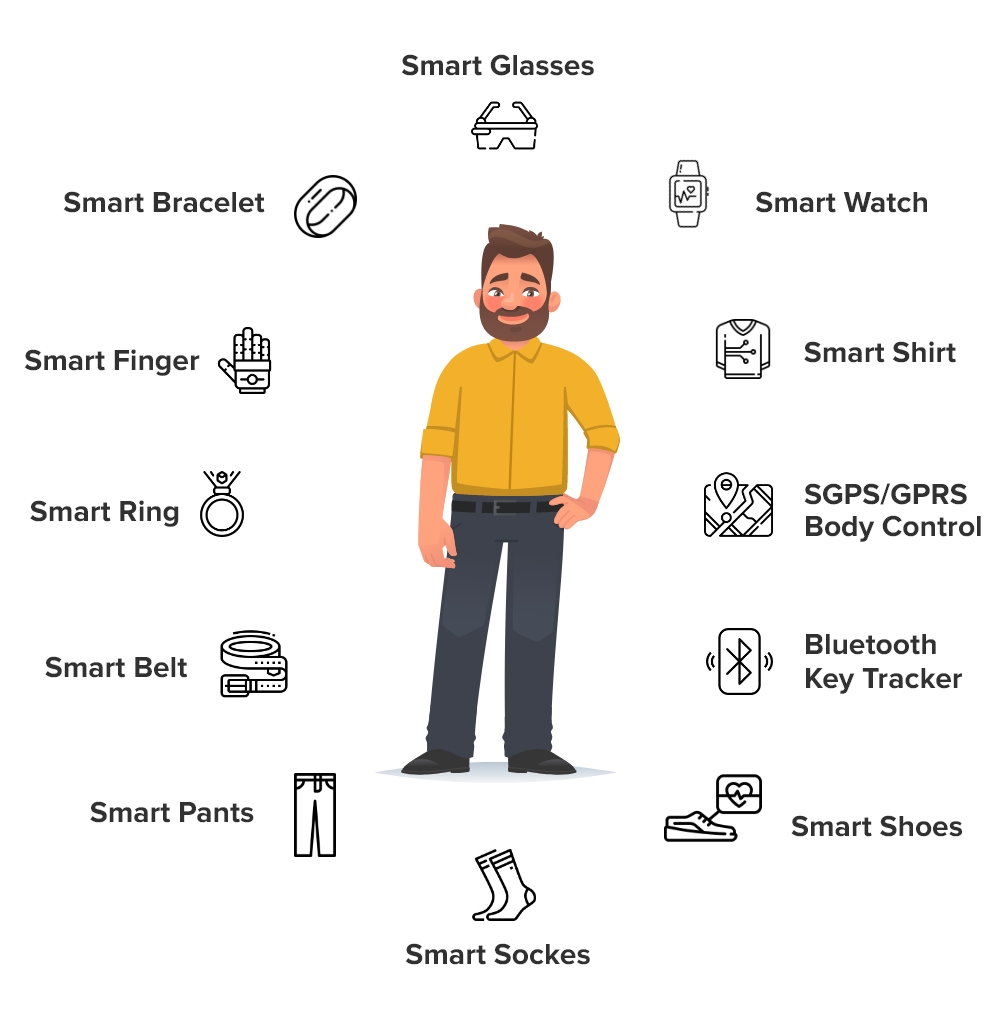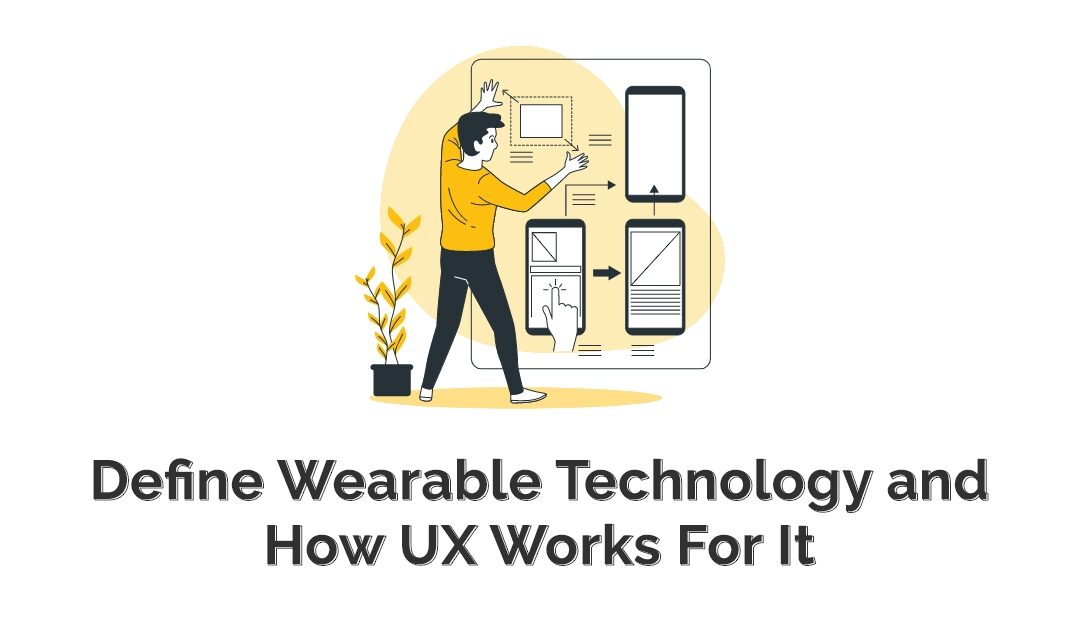Wearable technology, also famous as wearables, is a kind of electronic device. It is used as accessories, fixed in clothing, inserted in the user’s body, or even tattooed on the skin. These devices are hands-free devices with efficient uses, influenced by microprocessors, and strengthened with the capability to send and receive data via the internet.
The fast adoption of such gadgets has made wearable in the lead of the Internet of things. The best examples of wearable devices are Apple Watch, Google Glass, Fitbit, Motiv Ring, Oculus Rift, and many more that changing the whole scenario. It also affects our lifestyle.
There are advanced changes in UX wearable devices because now UX designers design wearable devices more creatively, so users use them in the best way.
We observe new categories of interface techniques. It brings notable changes in how users explore and connect with technology.
Schedule Your 30 Minutes FREE Consultation
UX Wearable Technology
People are using more wearable devices and are attracted to them because of their style and uses. There are many latest technologies in wearable technology 2021. It helps UX designer firms to create the best design so that more consumers are attracted to the devices. Consumers always prefer to use customized products so that it looks trendy and practical.
There are multiple technology benefits, such as in health care devices. When we design a wearable device, there is a need to analyze where or how it is used & the hardware, software integrate each other.
Every wearable device is never identical to each other in designs such as a smartwatch or EEG headband. The slight differences attract more users. There is an advanced wearable design that helps to create the latest designs for wearables.
Leveraging Various Senses For Wearables
Wearables bring the primary interest of being more related to the physical body than any smartphone or mobile device. We know this from the initial stage of product development and concentrating on just the hand interaction.
Research shows that wearable devices in a hands-free set show the tracks users choose when their visual capabilities are in demand. People plan or move in directions because of their natural behavior, despite their reasonable ones. They lead naturally towards the easier, active paths to complete the action.
Many applications efficiently leverage multiple senses, such as the Evernote app for the Apple watch. There are various steps in the watch version of the application that have identical objectives as their desktop or mobile counterparts. It presents & is produced with a single button click. The user immediately accesses all the features of the app.
This technology brings comparison of the human part with a deeper emotional connection. There is a need to know how the product touches these sensations to take benefit of those effects.
Voice User Interface Wearable Technology
Designing a Voice User Interface (VUI) is different because there were difficulties in the past with voice recognition programs. VUIs give a challenge because of their moving and invisible nature because visual interfaces interact with verbal commands and actions to the user.
UX wearable design for these kinds of devices suggests the limitations or challenges in the past. We connect with someone, getting into awareness that the individual understands the abilities of the tools. It helps to design the various devices in the best way.
Speech showing the user with information is frequently highly ineffective. In most cases, it proves efficient to include support for voice communication but restricts its uses. Accepting verbal input and presenting verbal feedback are the most effective ways to integrate a VUI into the user experience.
Microinteractions Designing Wearable
UX designing for wearable tech helps to find a unique position of spaces and interactions. In websites or apps, there is space for grids and interaction paths that efficiently manage the quality of content.
When we plan to design wearable devices, they have limited space for communication. Their designers depend on intuitive support to provide the best user experience to the user.
You promote one or two concurrent interactions that don’t prefer the user constantly switching between hitting on the screen and scrolling or zooming the digital crown on the side of the device.
Managing interface with the menu of Watch, tap an icon on the menu, there is a need to zoom in and out most of the time using the crown while occupying yourself from the primary task to finish.
Features Of UX Wearable
When you want to design any wearable device, we consider some points during the UX designing process.
Glanceability
It means designing information that is consistent with brief moments of interaction and concepts introduced first into the picture. The fitness trackers with fewer screens in which lights are the only source to tell the user what’s happening.
We focused Glanceability on giving the user want to change the interface to its visual feedback. There is limited screen space in wearable devices, so there is a need to present useful information in that space. A user can understand content designed for a smartwatch in 5 seconds. It gives an impressive user experience.
Context
Context is the key ingredient that strengthens your design and presents information at a glance. There is a need to use built-in device sensors to understand user context. When a user prefers to use geolocation services, there is a need to enhance the user’s experience.
Lessen Interactions
The longer user session is effective in desktop or mobile apps, but in wearable devices it keeps short. In case the user interaction is over 10 seconds, there is a need to redesign your interface.
Simplicity
The KISS principle applies in technology despite website or mobile user interfaces. You include fewer features and information in the wearable.
It is better to pay attention to a single-use case, and the design has a smooth draw that helps users to complete tasks immediately. There is a need to keep complications away from interactions and make design simple so that users see one thing in time.

Features Of UX Wearable
When you want to design any wearable device, we consider some points during the UX designing process.
Interruptions
We know that regularly interrupted incoming notifications or alerts in large-screen smartphones. When we use wearable devices, they force users to get their notice. It makes people leave them because it is very frustrating.
We design so that users get filter information on their wearables. It is also good to keep the frequency of notifications less, so people wearing them & don’t get frustrated. In case the notification is necessary, make it ensure that they have the best quality.
Positive interference has its benefits that provide users’ current needs. Displaying the information with cracking bull’s-eye at the time is the secret to an attractive wearable app. It is beneficial for users to select the notifications type, vibration or screen glow, or both.
Privacy
There is a big difference between wearables or smartphones, and privacy stuff is also different in all aspects. We know that wearables have an edge closer to the physical body than other devices.
These devices are very personal, so UX designers are more careful about how the device is facing and show its content. It is better to give more options to show personal content as a stick to a blank screen or vibrations.
Non-Visual Edge
There are many ways to interact with the visual world. Using the low-key interface is performed better in wearable devices. UX designers should not stick to the visual approach; designing techniques will reduce. They use sound and vibration to inform users of notifications.
Various Factors
Many other factors need to be included in the wearable technologies so users can easily use their various wearable products such as smart belts, socks, pants, rings, Bluetooth key tracker, SGPS/GPRS body control features.
All features depend on wearable products, so UX designers use unique designs according to the devices. Key factors that need to be added are offline mode, wireless network.
When UI UX design agency, design wearable devices or smart devices related to health, they prefer to use lower frequency radiation in devices. People wish to use fewer frequency radiation devices.
Future of Designing Wearable Technology 2021
We have been experiencing the trend of smart devices for the last many years. In these years, this technology expands, and UI UX designers get multiple opportunities to interact with a digital world with creative designs. The designer uses the latest technology in wearable techs so that more people engage with smart devices.
In the coming years, designers give more importance to every detail and design according to their needs. There is a need to consider all details about wearers how they use these devices or wear them, so they perfectly deliver all information to the wearer.
Wearables flow technology from the screen into real-world situations, conferring unique questions for designers to view and challenges to overcome. It’s interesting for designers to shape the future of UX wearable design.
Final Words
UIUX Studio is providing advanced UI UX design services to various clients worldwide. Our experts know that expanding the tech movement is a challenge to bridge the gap between aesthetics and features.
User experience design firm know how to gear up to achieve usability.
Hire UX design agency for wearable device designs.
Chat on Skype with us to know more about UX wearable design benefits.
